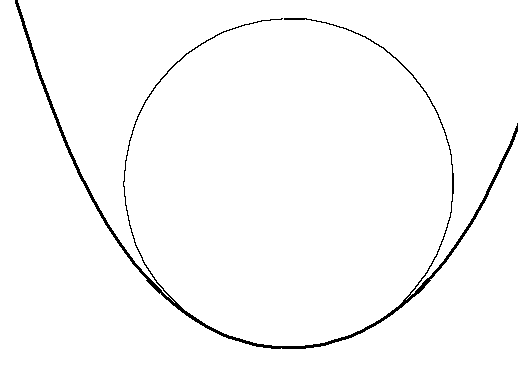Leibniz and the Osculating Circle
In order to approximate the curvature at each point on a curve, we actually use a special type of circle called an osculating circle.
The circle we are using is caled an osculating circle because it kisses the curve at only one point. The word osculate is derived from the Latin osculari, meaning to kiss. The term was originally coined by German mathematician and physicist Gottfried Wilhelm Leibniz (1646-1716).

To understand how we can approximate the curvature at any given point using this principal, imagine that you are driving in a car on an open road. If the road bends, and you lock your steering wheel at the center of the turn, you will begin travelling in a circle. That circle, then, would be tangent to the road at the point where you locked your steering wheel; it would be an osculating circle!
At the point you lock your steering wheel, it is turned such that your wheels are parallel to the road at that point. If you lock them here, however, they continue to remain parallel while the road continues off in another direction. When you return to your original point, however, your wheels will again be parallel to the road, but only at this point will they be so.

Gottfried Wilhelm Leibniz was a German physicist and mathematician who is most known for his controversial discovery of calculus. The controversy is centered in the dispute that both Isaac Newton and Gottfried Leibniz both discovered calculus around the same time. Though Leibniz published his findings shortly after Newton, his notes were considered too superior to have been copied, and so the true discoverer of calculus remains unknown.